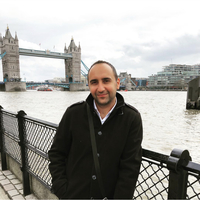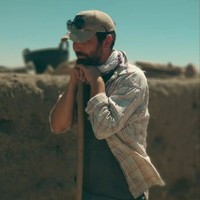
Ercan Aşkın
ancient
less
Related Authors
Hüseyin Uzunoğlu
Akdeniz University
N. Eda Akyürek Şahin
Akdeniz University
Nalan Eda Akyürek Şahin
Akdeniz University
Sabine R. Huebner
University of Basel
Dragoș Hălmagi
Institute of Archaeology "Vasile Parvan"
Thomas Corsten
University of Vienna
Ahmet Türkan
Eskisehir Osmangazi University, Turkey
Erkan Taşdelen
Akdeniz University
pınar özlem aytaçlar
Ege University
InterestsView All (34)









Uploads
Papers by Ercan Aşkın
Due to the modern city of Ermenek being founded on the ancient city Germanikopolis, located within the borders of Rough Cilicia / Isauria in the ancient period, no architectural remains are encountered. However, there are many rock tombs belonging to the city’s necropolis on the rocks to the north of the town center. In addition, rock tombs are discovered in the city’s immediate vicinity. Four tombs were identified 250 m southwest of Ermenek Karalar Neighborhood, located approximately 4.5 km south of the beeline distance of the ancient city. These are probably the surviving elements of a small rural settlement. Three of these tombs are bedrock sarcophagi, and the fourth tomb is a chamasorium located 20 m northwest of this group. One of the bedrock sarcophagi is particularly striking because of the reliefs it carries. On the relief on the tomb, which we date to the Roman Imperial Period, the father of the family is depicted protecting his family with his spear against a bear. The subject of this study is the tomb with reliefs, which is stylistically similar to the reliefs of the Isauria Region.
Due to the modern city of Ermenek being founded on the ancient city Germanikopolis, located within the borders of Rough Cilicia / Isauria in the ancient period, no architectural remains are encountered. However, there are many rock tombs belonging to the city’s necropolis on the rocks to the north of the town center. In addition, rock tombs are discovered in the city’s immediate vicinity. Four tombs were identified 250 m southwest of Ermenek Karalar Neighborhood, located approximately 4.5 km south of the beeline distance of the ancient city. These are probably the surviving elements of a small rural settlement. Three of these tombs are bedrock sarcophagi, and the fourth tomb is a chamasorium located 20 m northwest of this group. One of the bedrock sarcophagi is particularly striking because of the reliefs it carries. On the relief on the tomb, which we date to the Roman Imperial Period, the father of the family is depicted protecting his family with his spear against a bear. The subject of this study is the tomb with reliefs, which is stylistically similar to the reliefs of the Isauria Region.